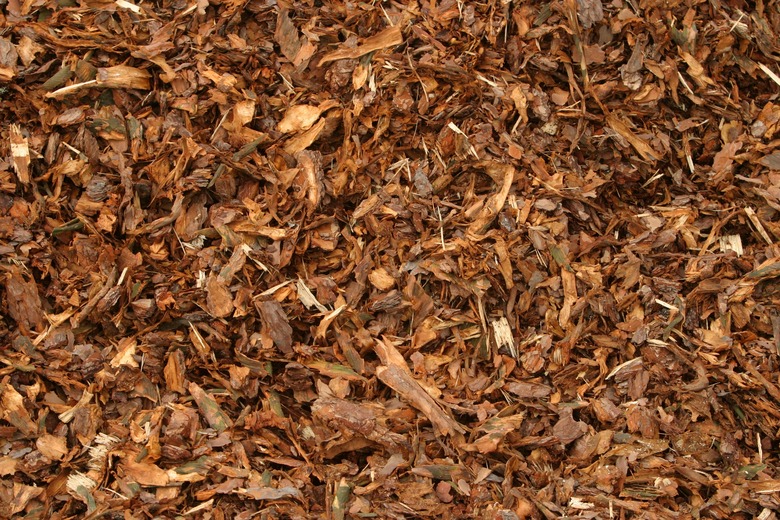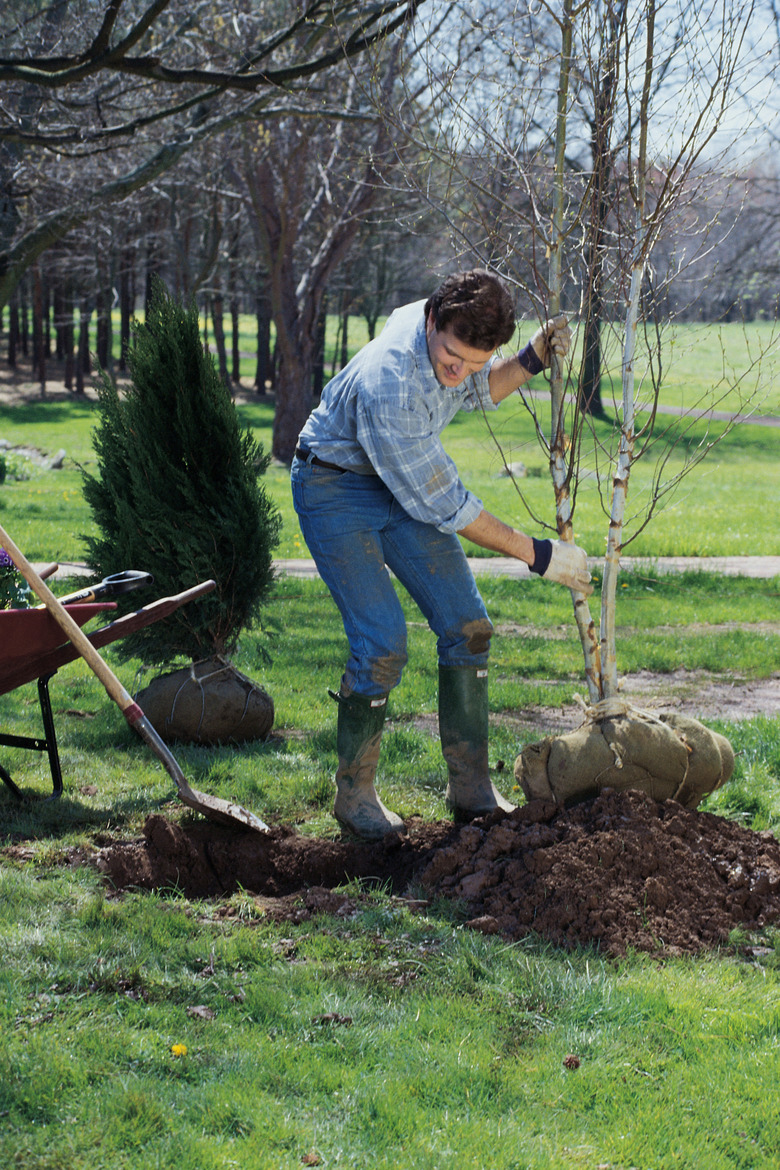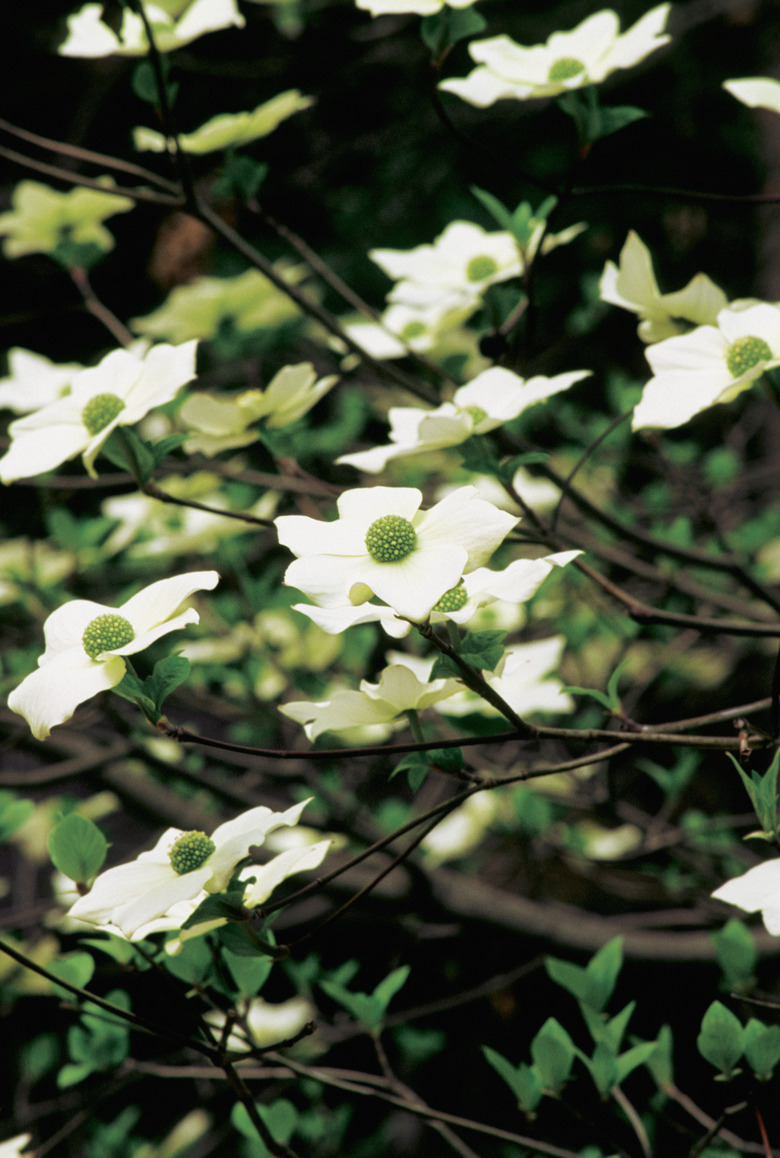When To Fertilize Dogwood Trees?
There are two types of flowering dogwood trees that are usually available in garden centers. Cornus florida is native to the eastern United States, where it grows under tall pine trees or along the edges of deciduous forests. Cornus kousa, native to Asia, is more tolerant of full sun. If you can provide an optimal habitat for them, dogwoods should thrive and flower freely with little need for fertilizers.
Step 1
In the wild, dogwoods grow under a canopy of trees that provide light shade, protection from drying winds and a supply of leaf litter every fall. The leaves make a natural mulch to suppress competition from weeds; they keep the dogwood's shallow roots moist and provide a natural fertilizer and slightly acidic soil as they rot. When you bring your dogwood home and plant it, spread a 3- to 4-inch layer of organic mulch around the tree, extending to 8 feet around the base. Leave a ring 4 inches from the tree trunk so you don't smother the bark and cause rot. If your tree is a specimen in a lawn, this ring of mulch is especially important so the roots are not competing with the grass for water and you will never damage the tree's trunk with a mower or string trimmer. The mulch will fertilize the tree while it is getting established.
Getting your Dogwood Established
Step 1
Over-fertilization can kill young trees, so root growth is improved by avoiding nitrogen in the first year. Let the tree find a natural balance without any chemical fertilizers for a year or you can overstimulate leaf growth at the expense of roots and flowers. Before you plant your tree, check that the spot you have picked drains freely. Fill the planting hole with water; if it hasn't drained in 10 minutes, choose another spot. Keep the tree well watered in dry weather the first summer, but remember that dogwoods don't like wet roots.
Step 2
- In the wild, dogwoods grow under a canopy of trees that provide light shade, protection from drying winds and a supply of leaf litter every fall.
- Keep the tree well watered in dry weather the first summer, but remember that dogwoods don't like wet roots.
When and How to Fertilize
Step 1
If you have an established tree in need of a boost, choose a liquid fertilizer that contains 5 percent nitrogen, 30 percent phosphorous, 5 percent potassium and other minerals such as manganese and zinc. Apply it in February and mid-June. Alternatively, spread general purpose granular fertilizer evenly around the tree, using 1 cup per inch of trunk diameter (measured at 3 feet up the trunk) and covering a radius of at least 2 feet from the trunk. Extend beyond the canopy of the tree if possible. Don't feed after July when the vigorous new growth is over and the plants are producing flower buds for next spring.
If Your Dogwood is Not Flowering
Step 1
If your dogwood is not flowering as freely as you would like and it has been fertilized, it is best to consider what else might be wrong before applying more fertilizer. Make sure the roots are not competing with grass, weeds or other trees and that it is not in deep shade. Remember that young dogwoods can take three to five years to start flowering. Check that poor drainage is not causing root damage or fungal diseases. Unusual climatic conditions at bud set time can destroy tender buds. Normal flowering will resume next year, so keep the tree moist and mulched. There is often an alternate pattern to blooming; if the tree flowered abundantly the previous year, it may need a rest. Finally, drought stress from hot, dry summers can inhibit blooming, so drench the roots regularly in very hot weather.
Step 2
- If you have an established tree in need of a boost, choose a liquid fertilizer that contains 5 percent nitrogen, 30 percent phosphorous, 5 percent potassium and other minerals such as manganese and zinc.
- Finally, drought stress from hot, dry summers can inhibit blooming, so drench the roots regularly in very hot weather.



